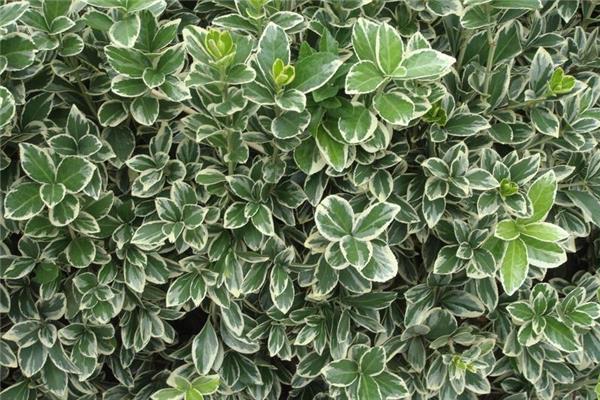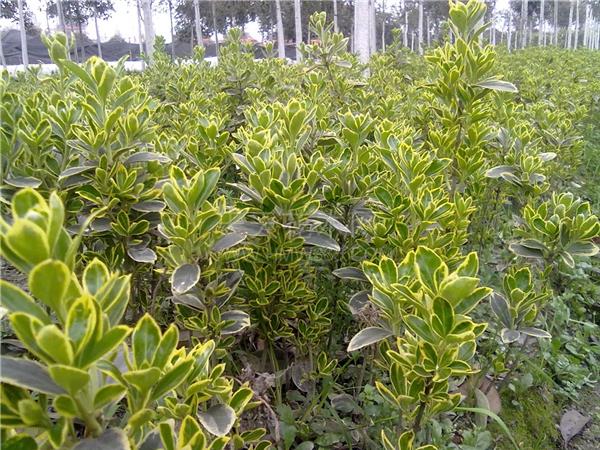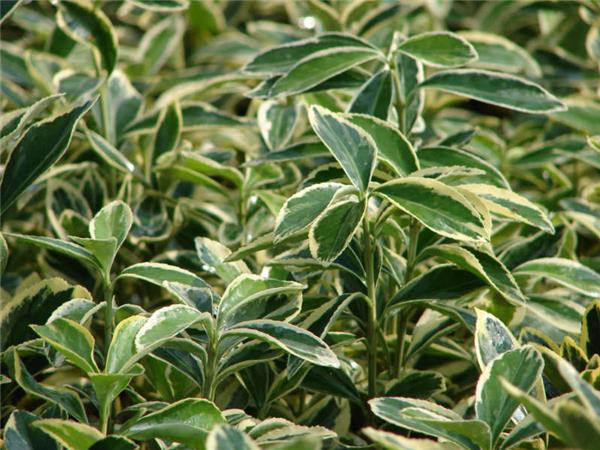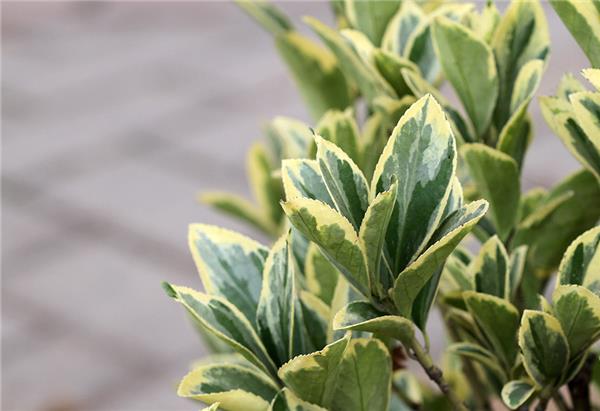What are the points for attention in the culture of Populus tomentosa in Phnom Penh?
Phnom Penh Populus tomentosa is a kind of colorful leaf landscape tree species, which is mainly used in landscaping. It belongs to evergreen shrub, which can purify a lot of harmful gases, so it is very suitable for planting in cities for urban greening.

Introduction of Populus tomentosa in Phnom Penh
Features: Populus tomentosa is a cultivated variety of Populus tomentosa, which is named because the leaf edge (edge) of the plant is golden. Its branches are low, branches slightly angulate, branchlets green, leaves opposite, leaf blade Obovate, 3-5 cm long, 2-3 cm wide, obtusely serrated, leathery, glossy, flowers green-white, Cymes, capsule nearly spherical, flowering in May, fruiting from September to October.
Habits: Populus tomentosa in Phnom Penh prefers a warm, humid and sunny environment with a suitable temperature of 10: 25 ℃. It is resistant to drought, has no wilt under the condition of no rain for a long time, and recovers quickly after rain. It is hardy and can survive at-20 ℃. The soil is not strict, and it can grow smoothly in the soil with a ph of 7. In the sandy loam with deep and fertile soil and good drainage, the branches and leaves are luxuriant and grow well.
Uses: Populus tomentosa is not only a guardian of family health, but also an ideal greening tree species in polluted areas because of its resistance to harmful gases and smoke. Therefore, this tree species has high ornamental value and economic practical value in the garden. In the garden, Phnom Penh big-leaf boxwood is often used as a garden "green" hedge, family bonsai or clusters planted in flower beds and lawns, and some are planted by the door to trim into various shapes for people to watch.

Planting Management of Euonymus tomentosa in Phnom Penh
Cutting: the sturdy, disease-and pest-free semi-lignified shoots of the current year were cut from the middle, upper and periphery of the crown of Euonymus tomentosa, harvested and placed indoors or in a cool place, then cut into cuttings with a length of 7-10 meters, the upper end was flat and the lower end was oblique, leaving 2 leaves in the upper part of the cuttings, and the rest leaves were removed to reduce water evaporation and remove the tender buds.
Cuttings: cuttings can be quickly dipped in naphthalene acetic acid solution or directly cut before cutting. The depth of cuttings is 2cm 3 of cuttings, and the density of cuttings is 60-70 plants / m2. After insertion, disinfect the substrate with 8-1000-fold carbendazim solution. Spray immediately after the seedbed is full, spray twice in the morning and afternoon in sunny days, spray every half an hour at noon, and increase the number of sprays in hot summer to reduce the temperature.
Transplanting: one month after planting, gradually open and peel off the plastic film, so that the plant gradually adapt to the open environment, a month later, the new root Lignification degree is enhanced, you can transplant. When transplanting, the root system should be kept intact as far as possible, and watered with planting to ensure the survival of transplanting.

Common diseases and insect pests of Euonymus tomentosa in Phnom Penh
Yellow poplar silk leaf borer: the larvae spin silk to connect the surrounding leaves and twigs as temporary nests, and then feed on them, and in serious cases, eat up the leaves, resulting in the death of seedlings. Can be killed artificially, in the adult spawning period, combined with seedling pruning, removal of egg blocks, buds, centralized burning. Black light can also be used to trap and kill adults. When the larvae are seriously damaged, 1000 times of 50% fenitrothion emulsion or 4.5% cypermethrin 2000 times can be sprayed.
Peach powder aphid: wingless female aphids and nymph aphids gather on the branches and the back of young leaves to absorb juice, and there are often white waxy secretions on the affected leaves, which can easily cause coal fouling disease and blacken the branches and leaves seriously, affecting plant growth and ornamental value. Prevention and control need to protect ladybugs, lacewings and other natural enemies. It can also be sprayed with 20% chrysanthemum EC 2000 times or 2000 to 3000 times imidacloprid powder.
Powdery mildew: it harms the leaves of Euonymus tomentosa in Phnom Penh, and the leaves of the injured plants show wrinkling deformities, affecting their growth. In the early stage of the disease, 25% trimethoprim 1300-fold solution, 70% methyl topiramate 700-fold solution and 50% acetaminophen wettable powder were sprayed alternately.

In addition to the knowledge mentioned above, in the process of planting and conserving Phnom Penh Euonymus, we also need to pay attention to giving it reasonable fertilization and watering, timely pruning and shaping, and if it is a big-leaf Euonymus planted in the ground, we should also pay attention to removing weeds for it to grow healthily.
Related
- Wuhan Hospital Iron Tree Blooming Result Was Instantly Frightened by the Gardener Master
- Which variety of camellia is the most fragrant and best? Which one do you like best?
- What is the small blue coat, the breeding methods and matters needing attention of the succulent plant
- Dormancy time and maintenance management of succulent plants during dormancy
- Minas succulent how to raise, Minas succulent plant pictures
- What are the varieties of winter succulent plants
- How to raise succulent plants in twelve rolls? let's take a look at some experience of breeding twelve rolls.
- Attention should be paid to water control for succulent plants during dormant period (winter and summer)
- Watering experience of twelve rolls of succulent plants
- Techniques for fertilizing succulent plants. An article will let you know how to fertilize succulent plants.



